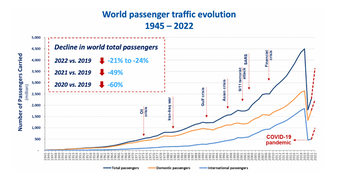
The container truck engine operated on the diesel cycle with a compression ratio of 12. Assume the mass of air in the engine is conserved. At the start of the compression process, the air is at 1 atm and 30 oC. 400 kJ/kg of heat is removed from the air during the constant-volume heat rejection process. The ratio of .
Through the diesel cycle, 20% of the work done by the air is used to operate the vehicle's refrigeration and heat pump system. One diesel cycle took 0.7s to complete. The heat rejection from the refrigeration and heat pump system is 800 kJ.
The refrigeration system uses R-134a as the working fluid and operates between 100 kPa and 1200 kPa pressure limits.
cp = 1.005 kJ/kg/K, cv = 0.7177 kJ/kg/K, R = 8.314J/mol/K, Molecular mass of air= 29g/mol.
1) Calculate the temperature at the start of the heat rejection process.
2) Calculate the temperature at the end of the heat addition process.
3) Calculate the temperature at the start of the heat addition process.
4) Calculate the specific heat addition.
5) Calculate the thermal efficiency.
6) Calculate the cyclical diesel engine’s net work done on the 0.8 kg of air.
7) Calculate the heat removed from the refrigerated space.
8) Calculate the coefficient of performance of the refrigeration system.
9) Calculate the mass flow rate of the refrigerant.
10) For the container truck, propose which heat engine cycle is preferred and explain the reasons.

Step by stepSolved in 3 steps with 17 images

- 1. A six-cylinder, four stroke, 3.2-L compression ignition engine operate on the diesel cycle with a compression ratio of 19. The air is at 95 kPa and 67°C at the beginning of the compression process and the engine speed is 1750 rpm. The engine uses light diesel fuel with heating value of 42,500 kJ/kg, an air-fuel ratio of 28 and a combustion efficiency of 98%. Using the constant specific heats at 850K determine the following: a) Maximum temperature b) Work net, Wnet c) Net Power output (kW) d) Specific fuel consumption in g/kWh, defined as the ratio of the mass of the fuel consumed to the net work output produced. *Constant specific heats at 850K: k=1.349, cp=1.110 kJ/kg-K, cv=0.823 kJ/kg-K, R=0.287 kJ/kg-Karrow_forward! Required information Problem 09.034 - Ideal Otto Cycle with Variable Specific Heats - DEPENDENT MULTI-PART PROBLEM - ASSIGN ALL PARTS An ideal Otto cycle has a compression ratio of 8. At the beginning of the compression process, air is at 95 kPa and 27°C, and 760 kJ/kg of heat is transferred to air during the constant-volume heat-addition process. Take into account the variation of specific heats with temperature. The gas constant of air is R = 0.287 kJ/kg-K. Problem 09.034.a - State After Heat Addition in Variable Heat Capacity Ideal Otto Cycle Determine the pressure and temperature at the end of the heat-addition process. (You must provide an answer before moving on to the next part.) The pressure at the end of the heat-addition process is 3915.8 kPa. The temperature at the end of the heat-addition process is 1647.7 K.arrow_forwardTemperature after the heat addition process = K Thermal efficiency =% Mean effective pressure = kpaarrow_forward
 Elements Of ElectromagneticsMechanical EngineeringISBN:9780190698614Author:Sadiku, Matthew N. O.Publisher:Oxford University Press
Elements Of ElectromagneticsMechanical EngineeringISBN:9780190698614Author:Sadiku, Matthew N. O.Publisher:Oxford University Press Mechanics of Materials (10th Edition)Mechanical EngineeringISBN:9780134319650Author:Russell C. HibbelerPublisher:PEARSON
Mechanics of Materials (10th Edition)Mechanical EngineeringISBN:9780134319650Author:Russell C. HibbelerPublisher:PEARSON Thermodynamics: An Engineering ApproachMechanical EngineeringISBN:9781259822674Author:Yunus A. Cengel Dr., Michael A. BolesPublisher:McGraw-Hill Education
Thermodynamics: An Engineering ApproachMechanical EngineeringISBN:9781259822674Author:Yunus A. Cengel Dr., Michael A. BolesPublisher:McGraw-Hill Education Control Systems EngineeringMechanical EngineeringISBN:9781118170519Author:Norman S. NisePublisher:WILEY
Control Systems EngineeringMechanical EngineeringISBN:9781118170519Author:Norman S. NisePublisher:WILEY Mechanics of Materials (MindTap Course List)Mechanical EngineeringISBN:9781337093347Author:Barry J. Goodno, James M. GerePublisher:Cengage Learning
Mechanics of Materials (MindTap Course List)Mechanical EngineeringISBN:9781337093347Author:Barry J. Goodno, James M. GerePublisher:Cengage Learning Engineering Mechanics: StaticsMechanical EngineeringISBN:9781118807330Author:James L. Meriam, L. G. Kraige, J. N. BoltonPublisher:WILEY
Engineering Mechanics: StaticsMechanical EngineeringISBN:9781118807330Author:James L. Meriam, L. G. Kraige, J. N. BoltonPublisher:WILEY





